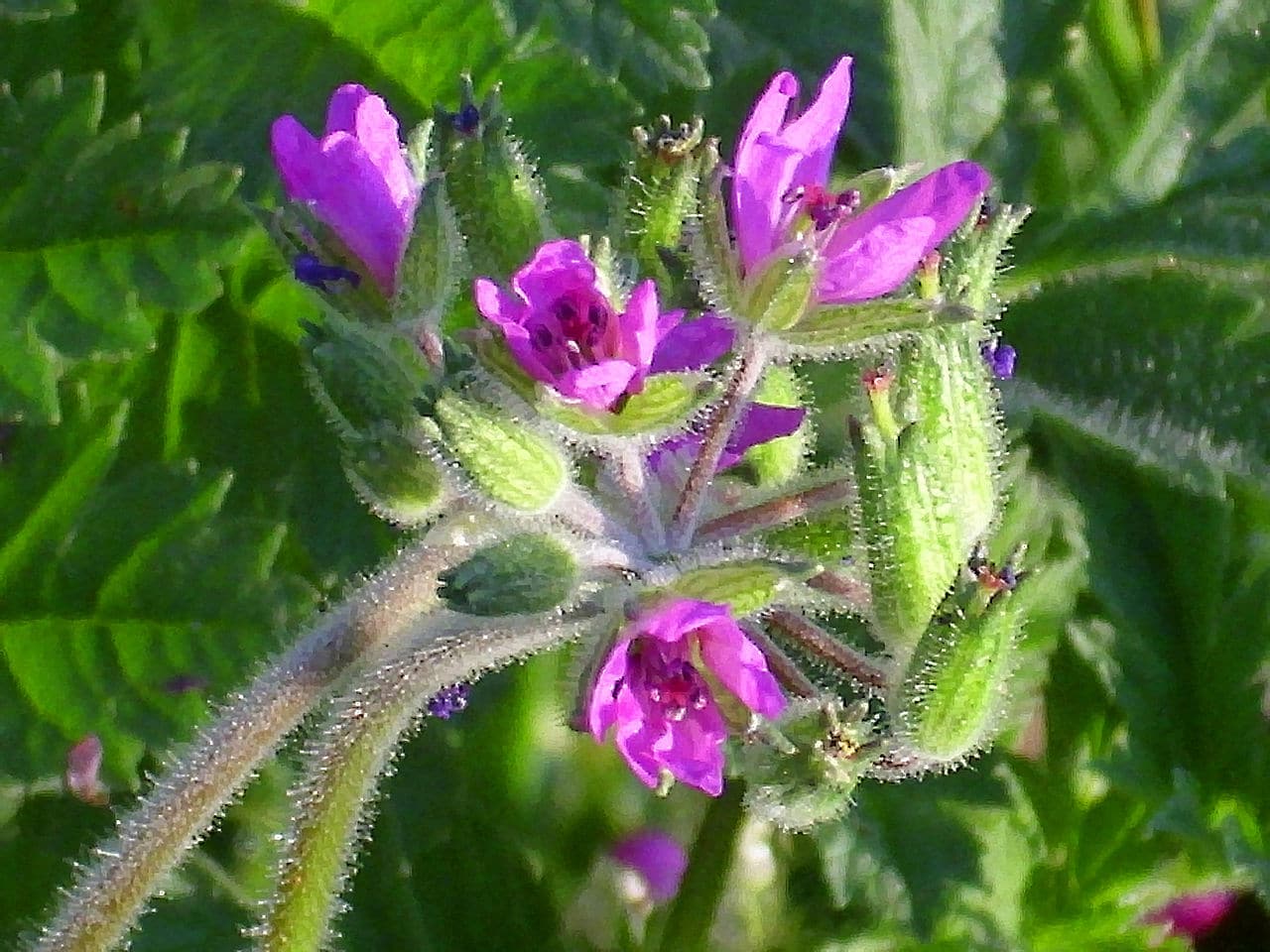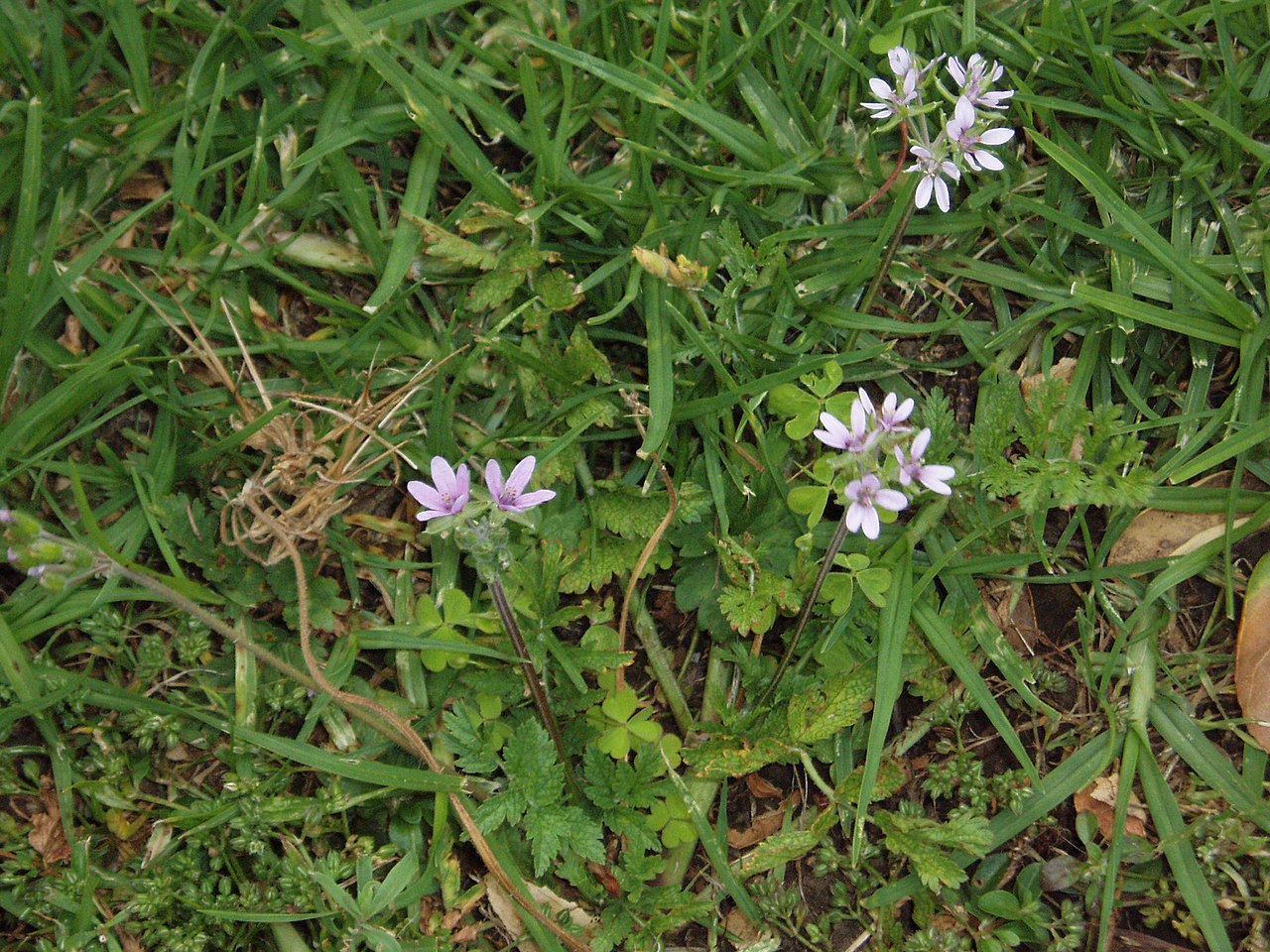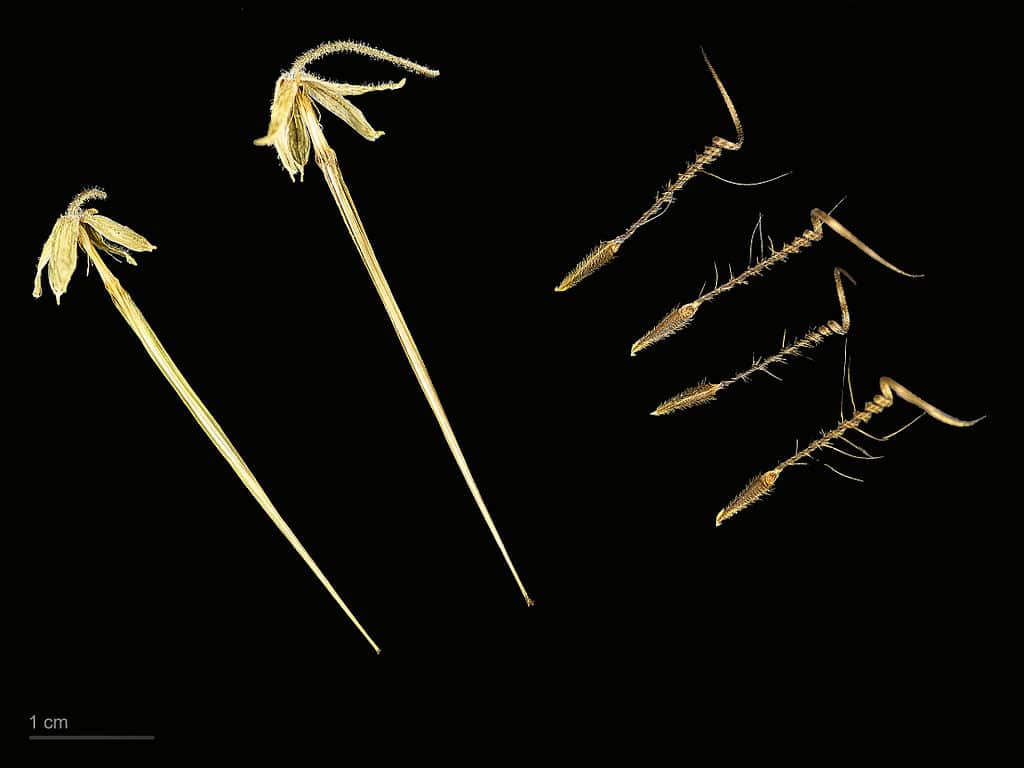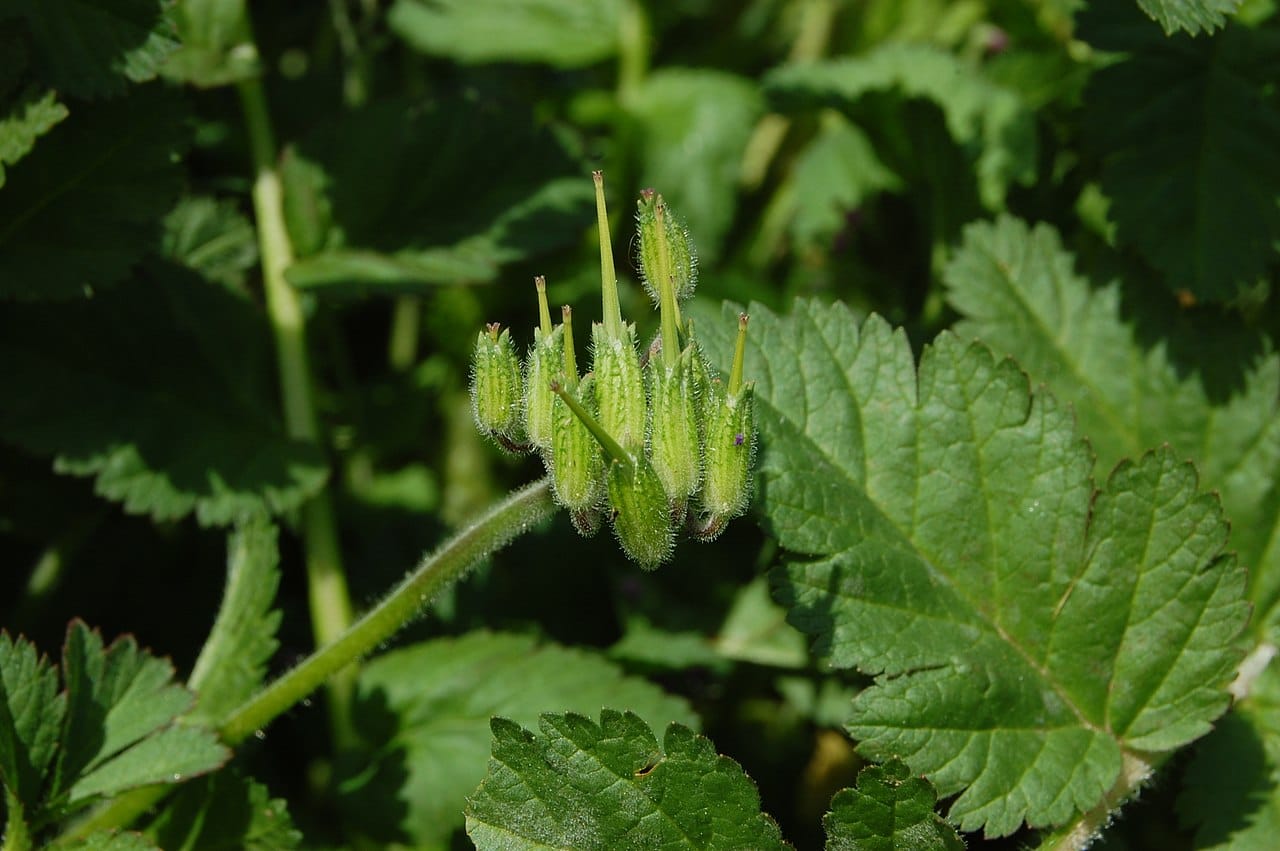
It is always interesting to know the plants that grow in our gardens and / or pots, even if they are not very welcome 😉. We are extremely lucky to live in a world with a wide variety of species, of which herbs are undoubtedly the most successful type of plant being.
Of the latter, there is one that although it has tiny flowers, this one is really pretty: the Erodium moschatum. This name may not sound familiar to you, but you may know it by its common name: musk.
Origin and characteristics of Erodium moschatum

Image - Wikimedia / Ewen Cameron
Our protagonist It is an herb native to southern and western Europe, where it grows in cultivated land, but also in uncultivated areas. It is easy to see it in sandy soils near the sea, but it can also grow in pots and / or planters if given the opportunity.
Its life cycle it can be annual, that is to say, it germinates, grows, blooms, bears fruit and then dries up in a matter of more or less a year; or biennial, that is, he lives two years. Its life expectancy will be determined by the climate above all: if the winters are mild, without frosts or with some very weak, it will live two years, otherwise, only one.
It develops robust stems, creeping or ascending, densely hairy, and up to 60 centimeters. The leaves are oblong-lanceolate, pinnate, and are composed of green, ovate leaflets.
Flowers appear from spring to summer, grouped in violet or purple umbels. They measure around 1,5cm, and once pollinated they produce brown or white fruits of up to 4,5cm, inside which we will find the seeds.
Whole plant gives off a strong musky odor, which is why it was given the name of musk. The scientific name, Erodium moschatum, was described by the Swedish scientist, botanist, zoologist and naturalist Carl von Linnaeus (or Carlos Linnaeus) in the year 1789.
If you are curious to know what it means, tell you that the genus, Erodium, derives from the Greek erodes, which translates as "a heron" which refers to the long beak of the fruit. As for moschatum, it is a Latin epithet.
Can it be grown as an ornamental plant?
Any plant, as long as it is not classified as an invasive species in our province, can be cultivated. Although it is true that herbs are not usually kept as ornamental plants, the reality is that it is very, very interesting to have a corner of wildflowers in the garden, or in a planter, for various reasons:
- They hardly need care.
- They are very resistant to pests and diseases typical of the area.
- They adapt without problems to the conditions of the place.
- It is easy to multiply them. In fact, if you want to have more specimens, you just have to let the seeds fall to the ground 😉.
- They attract beneficial insects, such as ladybugs which are great eaters of aphids, or the bees, which are the pollinators par excellence.
If all this is taken into account, and you dare to cultivate Erodium moschatum, we recommend that you provide the following care:
Location
Musk is a plant that worship the sun, which is why it is very important that it is placed outside, exposed to the sun's rays throughout the day.
Earth
Not demanding. Just keep in mind that if you are going to have it in a pot it is advisable to mix universal substrate with 20% of perlite or similar; In case of having it in the garden, it grows on all types of soils, even sandy ones.
Irrigation
It should be watered from time to time, ensuring that the soil or substrate does not dry out completely. We must avoid waterlogging, so the frequency of irrigation will be moderate. As usual, you have to water an average of 4 times a week during the summer season, and about 2 / week the rest of the year.
Subscriber
From early spring to late summer it is interesting to pay to Erodium moschatum with organic fertilizers, such as guano or mulch. But this is not something that is vital far from it: the plant can grow well without any extra contribution of nutrients.
Now, if the land is very prone to erosion, then it must be paid, even if only once a month.
Multiplication

Image - Wikimedia / Roger Culos
It multiplies by seeds in spring. To do this you can do two things:
- Pick the fruit and store the seeds in a cool, dry place until spring arrives;
- Or let the fruit fall to the ground and the seeds germinate on their own after a few months (spring).
If you choose to sow them in hotbed, it is important that you do not pile them up. It is better to plant only 2 or 3 in each pot or socket and thus ensure that all will grow well, than to group them together and run the risk that only 1 will succeed.
Rusticity
Resists weak frosts up to -5ºC.
What medicinal uses is given to musk?
Musk is an herb that, in addition to being used as an ornamental, has medicinal properties that should not be ignored. In fact, it is astringent, antidiuretic and healing. It is also used to make perfumes.

Image - Wikimedia / Franz Xaver
What do you think?